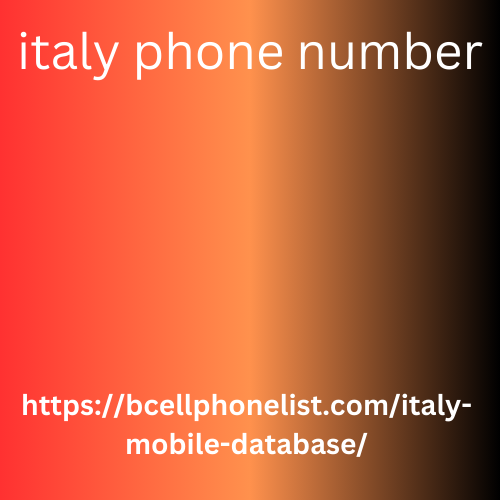Post by alimularefin63 on Jun 8, 2024 5:27:21 GMT
Canada, a vast and diverse country, is known for its picturesque landscapes, vibrant cities, and multicultural population. With its extensive territory, spanning from the Atlantic to the Pacific Ocean, and from the United States border to the Arctic Circle, Canada relies on a comprehensive telephone numbering system to connect its citizens. At the heart of this system are the telephone area codes, which play a crucial role in facilitating communication across the country.
Heading 2: The Structure of Canadian Area Codes
In Canada, telephone area codes are assigned based on geographical italy phone number regions, with each area code representing a specific geographic area. The structure of Canadian area codes follows a standardized format, typically comprising three digits. These area codes are used in conjunction with local phone numbers to create unique identifiers for each telephone line in the country.
The Canadian Numbering Administrator (CNA) is responsible for managing the allocation and assignment of area codes in Canada. The CNA ensures that new area codes are introduced as needed to accommodate population growth, urbanization, and technological advancements.
Canada's telephone numbering plan also includes special area codes for mobile phones, toll-free numbers, and other specialized services. These codes serve various purposes, such as distinguishing between landline and mobile numbers or providing free calling services for businesses and organizations.

Heading 3: Navigating Canada's Telephone Area Codes
Navigating Canada's telephone area codes can be straightforward once you understand the system. Each province and territory in Canada has its own set of area codes, which are distributed based on population density and telecommunications infrastructure.
For example, Ontario, Canada's most populous province, has several area codes covering different regions, including Toronto (416, 647, 437), Ottawa (613, 343), and Hamilton (289, 365). Similarly, Quebec, the second-most populous province, has area codes such as Montreal (514, 438) and Quebec City (418, 581).
In addition to provincial area codes, Canada has unique area codes for its territories. For instance, Yukon Territory is assigned the 867 area code, while Nunavut uses the 867 and 819 area codes.
Understanding the area codes is essential when making long-distance calls within Canada or from abroad. Dialing a Canadian phone number typically requires entering the country code (+1), followed by the appropriate area code and local number.
In conclusion, Canada's telephone area codes are integral to its telecommunications infrastructure, connecting people across vast distances and diverse landscapes. By understanding the structure and distribution of area codes, individuals can navigate the Canadian phone system with ease, facilitating communication and connectivity across the country.
